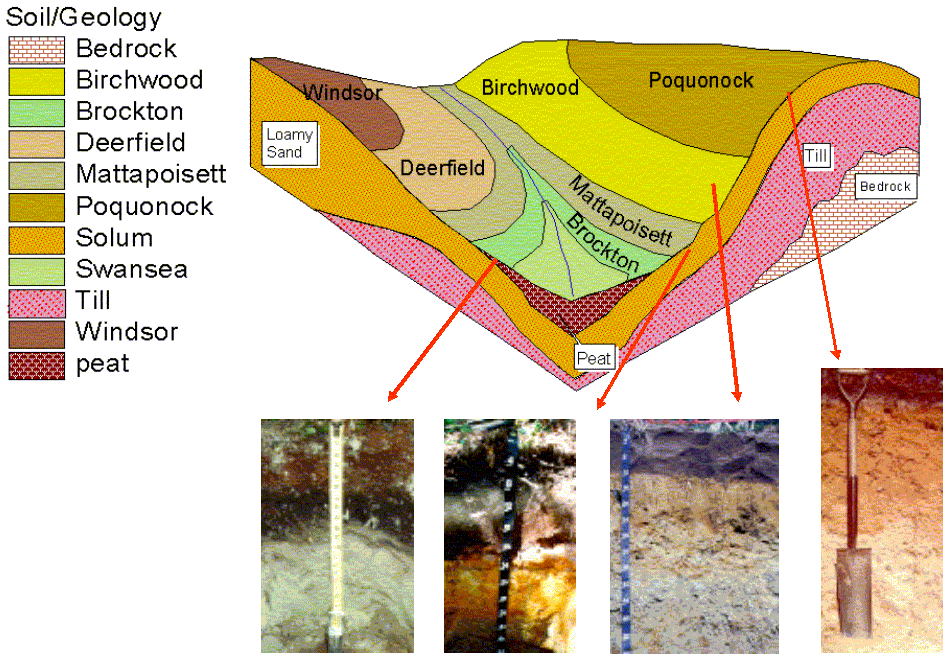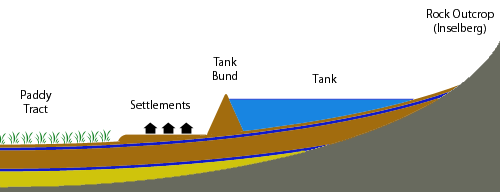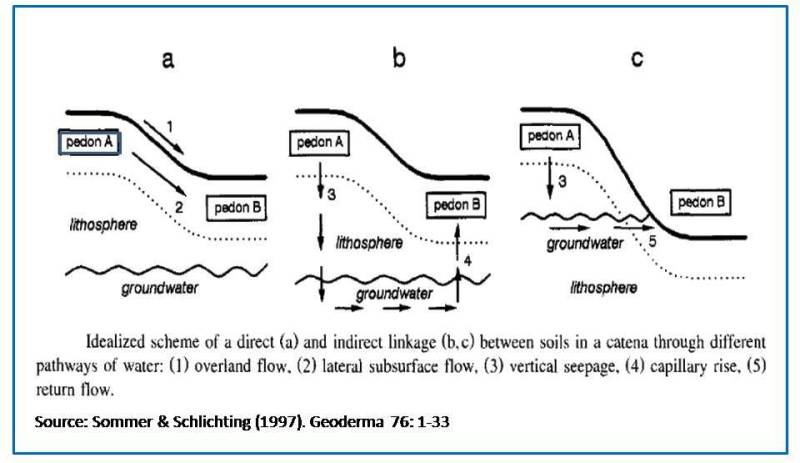Catena (soil)
A Catena (Latin for chain), Relief sequence or Toposequenz is in the Soil Science of the section through a soil landscape and the specific sequence of soil profiles along a relief, the profiles have similar parent rocks ( C horizons ) and the relief has similarities. Usually runs a Catena from the highest point in relief at the lowest, as opposed to a transect, which has to meet only the requirements that all measurement points lie in a straight line.
Conceptual history
The name comes from Geoffrey Milne in 1935 in the article "Some suggested units for classification and mapping, particularly for East African soils " ( in Soil Research Volume 4, page 183-198 ). The geologist Paul Vageler (1882-1963) wrote in 1942: " The basic idea of Catena method is so simple and logical that not only like the egg of Columbus, but already he seems like a platitude: In any natural terrain ... must always take place a transport of soil material from the relative heights on the relative lowering ... it must be so very specific series of merging soil and profile types ... order. "










